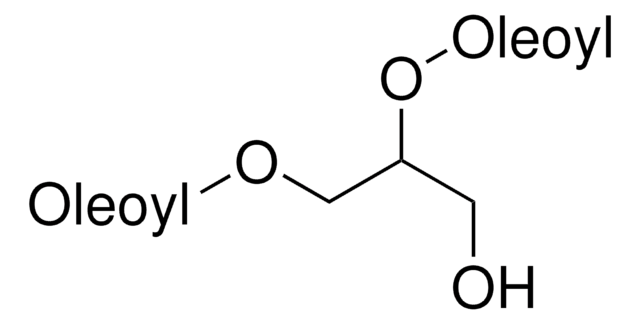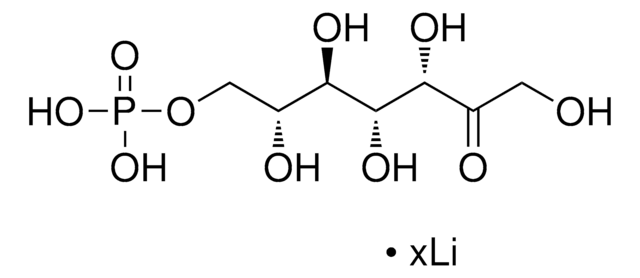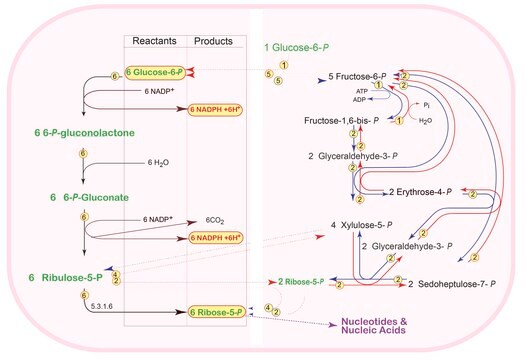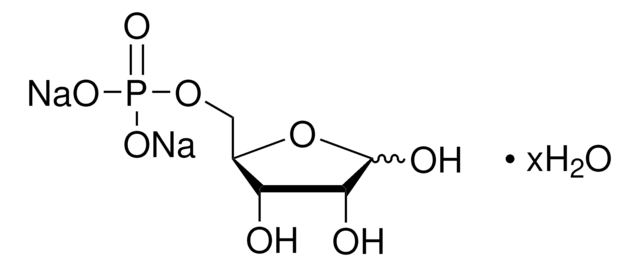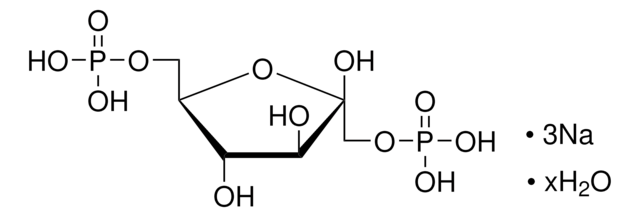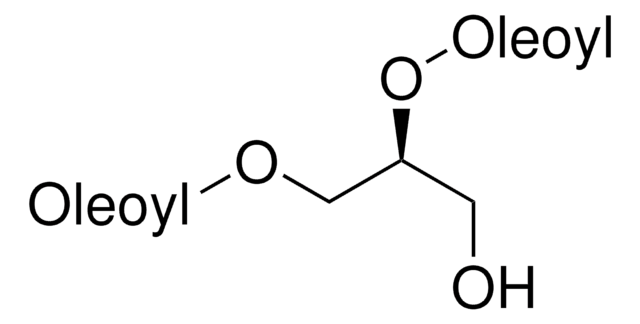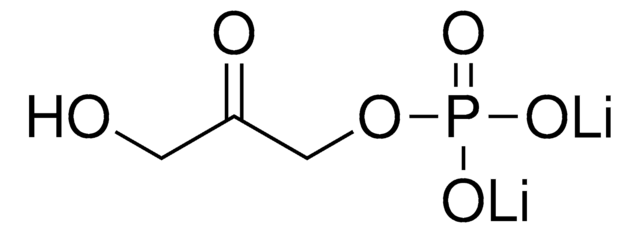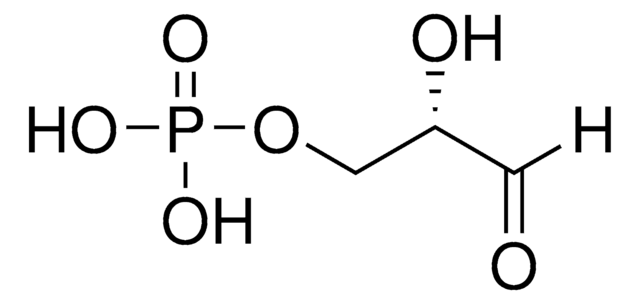E0377
D-Erythrose 4-Phosphat Natriumsalz
≥50% (TLC)
Synonym(e):
4-Phospho-D-erythrose Natriumsalz
About This Item
Empfohlene Produkte
Qualitätsniveau
Assay
≥50% (TLC)
Form
powder
Farbe
white to off-white
Löslichkeit
water: 50 mg/mL, clear to slightly hazy, colorless to faintly yellow
Lagertemp.
−20°C
SMILES String
[Na+].[H]C(=O)[C@H](O)[C@H](O)COP(O)([O-])=O
InChI
1S/C4H9O7P.Na/c5-1-3(6)4(7)2-11-12(8,9)10;/h1,3-4,6-7H,2H2,(H2,8,9,10);/q;+1/p-1/t3-,4+;/m0./s1
InChIKey
KKDBADMPNGAKHM-RFKZQXLXSA-M
Suchen Sie nach ähnlichen Produkten? Aufrufen Leitfaden zum Produktvergleich
Anwendung
Biochem./physiol. Wirkung
Sonstige Hinweise
Lagerklassenschlüssel
11 - Combustible Solids
WGK
WGK 3
Flammpunkt (°F)
Not applicable
Flammpunkt (°C)
Not applicable
Analysenzertifikate (COA)
Suchen Sie nach Analysenzertifikate (COA), indem Sie die Lot-/Chargennummer des Produkts eingeben. Lot- und Chargennummern sind auf dem Produktetikett hinter den Wörtern ‘Lot’ oder ‘Batch’ (Lot oder Charge) zu finden.
Besitzen Sie dieses Produkt bereits?
In der Dokumentenbibliothek finden Sie die Dokumentation zu den Produkten, die Sie kürzlich erworben haben.
Kunden haben sich ebenfalls angesehen
Artikel
The Pentose Phosphate Pathway operates in tissues that synthesize fatty acids and steroids. Learn more about the Pentose Phosphate Pathway, what it is and how it works.
Unser Team von Wissenschaftlern verfügt über Erfahrung in allen Forschungsbereichen einschließlich Life Science, Materialwissenschaften, chemischer Synthese, Chromatographie, Analytik und vielen mehr..
Setzen Sie sich mit dem technischen Dienst in Verbindung.
